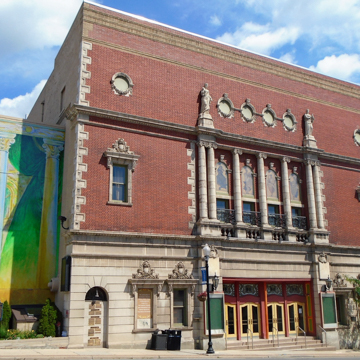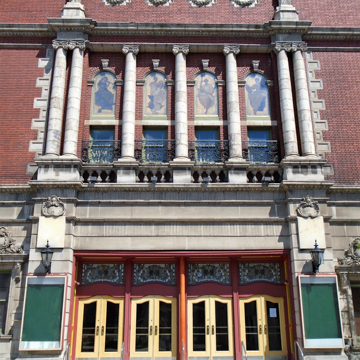Named for its founder, Isaac Charles “Doc” Mishler, the theater has an unusually large and glamorous auditorium and proscenium stage for its time. The limestone first story has ornate poster display windows on each side of the central entrance. Columns on the second story flank colorful representations of the muses and culminate on the third story in statues of Terpsichore and Melpomene, the muses of song and dance, and tragedy. Mishler initially worked for the Pennsylvania Railroad, but turned to theater management, eventually running three theaters in Trenton, New Jersey; Johnstown in Cambria County; and Altoona. Philadelphia theater designer Albert Westover (d. 1919) designed the grand 910-seat theater, whose location on the Pennsylvania Railroad's main line made it an excellent venue for premiering shows headed for Broadway, and, as a result, nationally known entertainers often performed here. The theater was used for stage productions and movies until 1965 when it closed. The Blair County Arts Foundation initiated its restoration in 1967, and owns the theater, which is home to the Allegheny Ballet Company, Altoona Community Theatre, Altoona Symphony Orchestra, and Blair Concert Chorale.
You are here
Mishler Theater
1906, Albert E. Westover; 2000, Hayes Large Architects,A. Raymond Goodman, project architect. 1211 12th Ave.
If SAH Archipedia has been useful to you, please consider supporting it.
SAH Archipedia tells the story of the United States through its buildings, landscapes, and cities. This freely available resource empowers the public with authoritative knowledge that deepens their understanding and appreciation of the built environment. But the Society of Architectural Historians, which created SAH Archipedia with University of Virginia Press, needs your support to maintain the high-caliber research, writing, photography, cartography, editing, design, and programming that make SAH Archipedia a trusted online resource available to all who value the history of place, heritage tourism, and learning.





